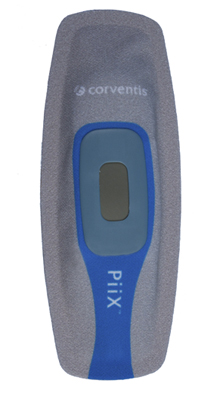Aussie study validates remote heart monitors


The result is exciting because it proves remote monitoring can save lives. Until now the main selling point of such systems was cost-effectiveness.
The Cochrane Reviews found 25 peer-reviewed studies covering 9,500 patients, all with chronic heart failure. Mortality was cut by one-third when remote monitors were in place.
(Picture from Corventis.)
These were very sick patients. Even with the monitors 102 of 1,000 patients were lost, but among those using the "standard protocol" 154 in 1,000 died. Structured telephone support did not show as good a result -- the reduction in mortality was not statistically significant.
The lead author on the analysis was Sally Inglis of Melbourne's Baker IDI Institute, currently serving a two-year stretch as a post doctoral research fellow at the University of Glasgow in Scotland.
In addition to seeing fewer deaths, Inglis reported the patients' quality of life improved, and overall health costs actually went down.
The result is important, Inglis said, because it gives a green light to search for business models for remote monitoring.
The first remote monitoring sensor, the Corventis PiiX, was approved for use by the FDA last year. The device, part of what the company calls the NUVANT Cardiac Telemetry System, is worn on the skin, costs a few hundred dollars, and delivers data to a zLink data modem over the cellular network.
The device includes an impedance detector and an accelerometer, allowing fluid buildup in the lungs to be detected before there are symptoms, when simple diuretics can correct the problem and hospitalization avoided. The accelerometer tells doctors whether the patient is lying down or active, which also aids diagnosis.
Validation of the technique should mean more sales for Corventis and more interest from medical centers and insurers.